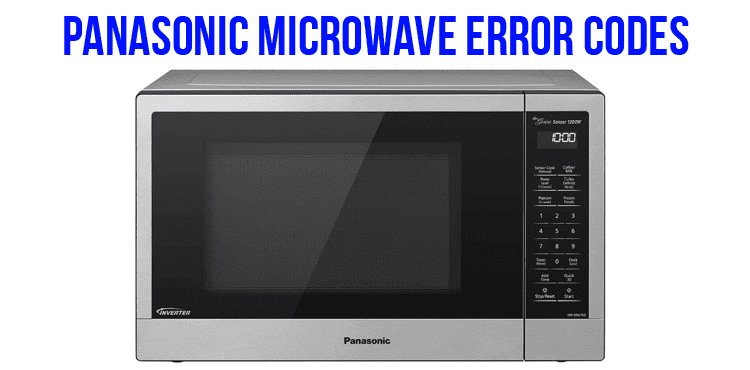
Seeing an error message pop up on your microwave’s display can be worrying, especially when you’re in the middle of cooking. Essentially, this error is your microwave’s way of communicating a problem. It’s like your car’s check engine light coming on. The F1 code specifically refers to an issue with the microwave’s main control board, which is like the brain of your microwave. Just like our brains send signals when something isn’t right, your microwave’s brain is alerting you to an issue.
Understanding the Error Code F1
When your Panasonic microwave displays the F1 error code, it usually indicates a failure in the main control board. The control board is crucial because it governs all the functions of your microwave, similar to how a conductor leads an orchestra. If the conductor is out of sync, the music is off. Similarly, when the control board malfunctions, your microwave can’t perform correctly.
You might be wondering, “Why does this happen?” Well, microwaves, like any electronics, are subject to wear and tear. Over time, components can degrade or become damaged due to power surges or accidental mishaps, like slamming the microwave door too hard. It’s like how your phone might start acting up after a few years of constant use. The F1 error is your microwave’s way of saying, “Hey, something’s off here, and I need some attention.”
So, what can you do when you see this error? First, try resetting your microwave by unplugging it from the power source for about a minute and then plugging it back in. It’s akin to rebooting your computer when it freezes. If the error persists, it might be time to call in a professional technician since replacing or repairing the control board involves working with complex circuitry.
Possible Causes of the F1 Error Code
The F1 error can appear due to several reasons. One common cause is a power surge that can disrupt the control board’s functionality. Think of it as a sudden spike of energy overwhelming the system, similar to a traffic jam that halts an entire highway. When this happens, the delicate components in the control board can become compromised, leading to errors.
Another potential cause is physical damage. If you’ve recently moved the microwave or accidentally jarred it, the control board might have been knocked out of alignment or suffered physical harm. Just like bumping into a bookshelf might knock off a few books, a sudden jolt to your microwave can affect its internal components. Additionally, moisture buildup from regular cooking might seep into the electronics over time, causing short circuits.
Lastly, general wear and tear cannot be overlooked. Microwaves work hard, especially in a busy household, and components can gradually deteriorate. It’s like a pair of shoes you’ve worn every day for years; eventually, they’ll show signs of wear. Recognizing these causes can help you be more mindful of how you use and maintain your microwave.
Solutions and Next Steps
Facing an F1 error doesn’t mean you’re out of options. First, try the simple solution of unplugging the microwave for a minute to reset it. It’s like giving it a quick nap to shake off the error. If this doesn’t work, inspecting the power source might be the next logical step. Ensure the outlet is functional, and the plug is secure, since a loose connection can sometimes cause these errors.
If the simple fixes don’t solve the problem, you may need to consult a professional. Panasonic microwaves are complex devices, and when it comes to their control boards, expert handling is often necessary. A trained technician can diagnose the specific issue with your microwave’s control board and determine whether a repair or replacement is needed. It’s a bit like calling in a mechanic for your car when it makes a strange noise.
Looking to prevent such errors in the future? Regular maintenance is key. Keep your microwave clean and dry, avoiding excessive moisture during cooking. Also, using a surge protector can help protect your appliance from unexpected power surges, much like wearing sunscreen protects your skin from harmful UV rays. By taking these proactive steps, you can extend the life of your microwave and enjoy hassle-free heating.
Microwaves are an essential part of modern kitchens, providing quick meals and convenience. So, when an error like F1 pops up, it’s understandable to feel a bit frustrated. But now you know that this error often relates to an issue with the control board, just like a computer’s motherboard might encounter a glitch. With this understanding, you can take the right steps to address the problem, whether it’s a simple reset or seeking professional help.
Remember, regular care can prevent many issues from arising. So next time you encounter the F1 error, you’ll know exactly what it means and how to handle it, keeping your microwave — and your meal schedules — running smoothly.